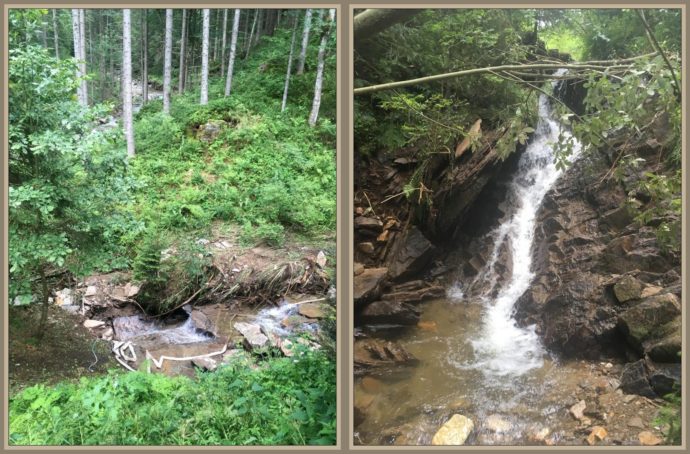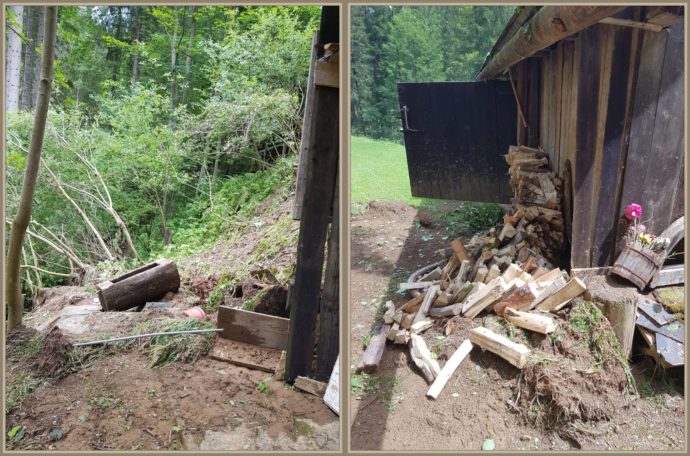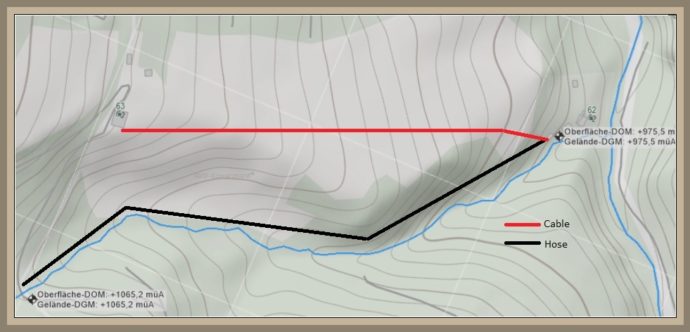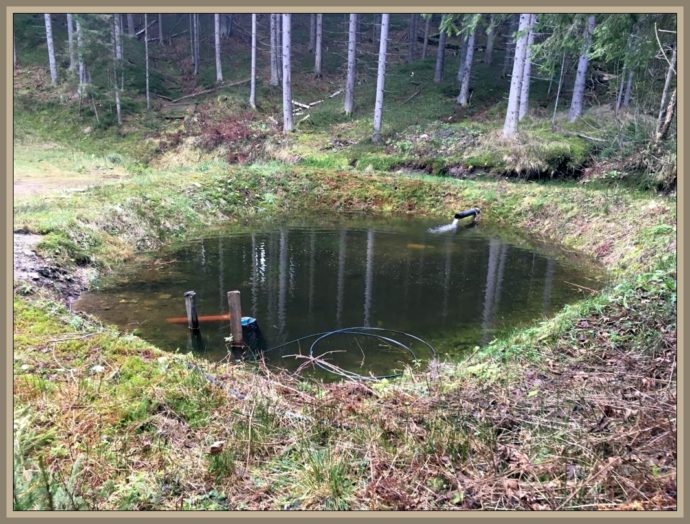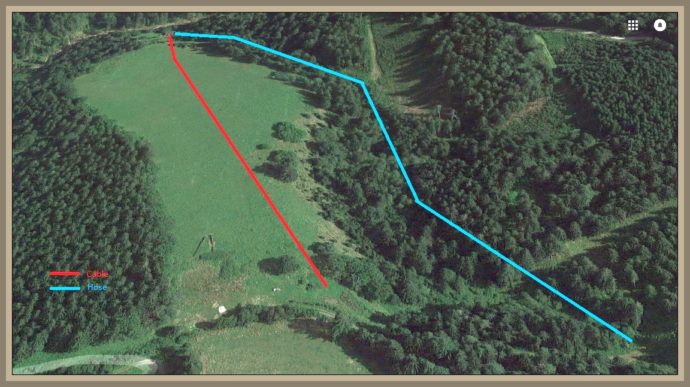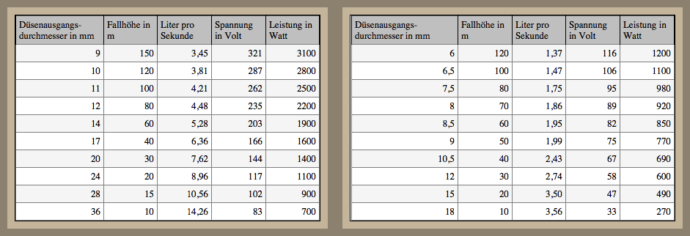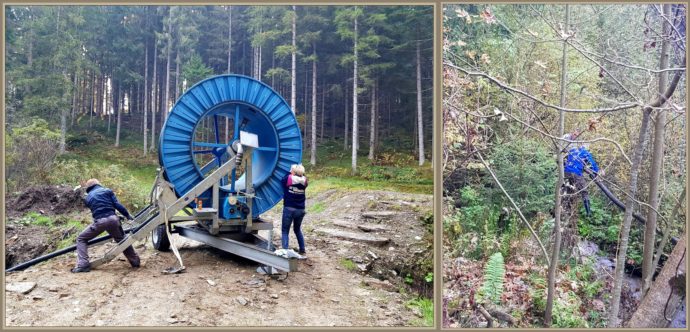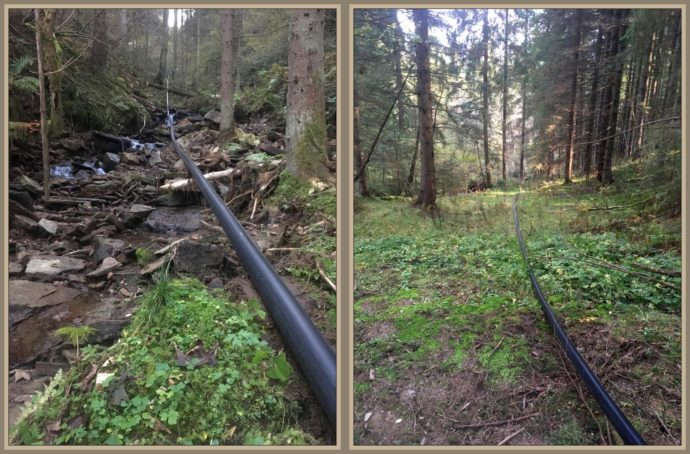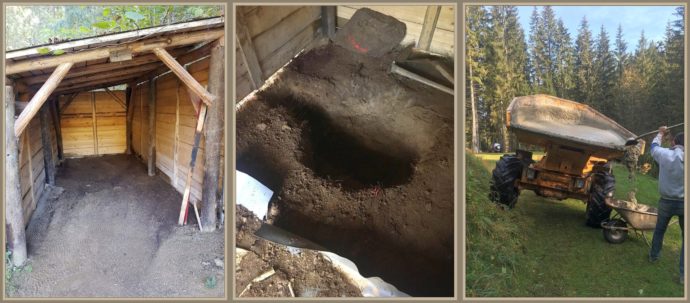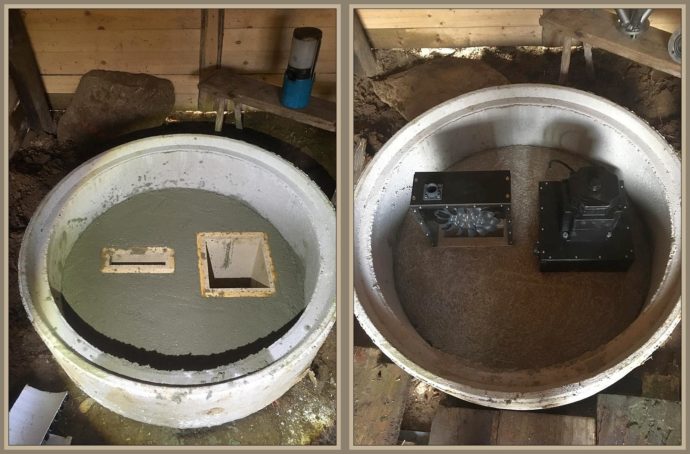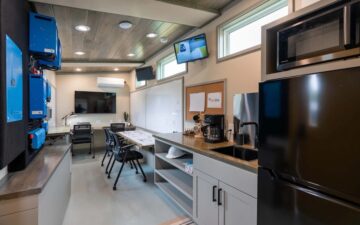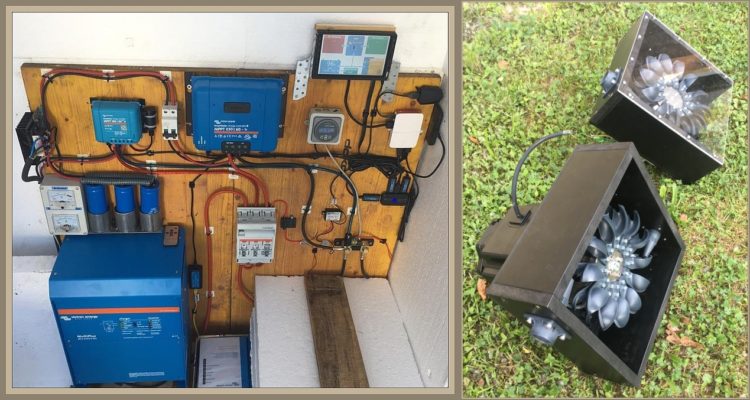
You may recall a year ago a blog about Hydro Power, in which Markus Pauritsch used a MPPT solar charge controller loaded and driven by a Pelton wheel water turbine to charge his off-grid cabin battery system in the Austrian Alps.
This year (the last day of 2018 as I write this) things have moved on from one man’s DIY system. The installation has now grown by necessity. Whilst the original install had worked well, that all came to a halt when a summer storm turned the hydro supply stream into a torrent.
Some hundreds of tons of terrain slid down the hill, wiping out the Pelton wheel, the hydro feed barrel and most of the firehose feed. A further mudslide hit the wood shed, a tree fell a few metres from the cabin roof and Markus got a black eye!
Time for a rethink.
Project planning & build
Whilst pondering the rebuild, Markus talked it over with his friend Werner – who for some years had wanted to build an off-grid recreational home on the land he owns adjacent to Markus, but lack of time on Werner’s part had prevented such a build. Pooling resources was the logical conclusion and a joint project was born.
As before solar was to be part of the project for the cabin and Werner’s new off-grid static mobile home, yet the topography of the location warranted hydro power to provide the lion’s share of power.
Topography
The distance between Markus and Werner’s location is 400m, with a height difference of plus 100m to Werner’s.
Werner has a small fishpond to feed the pressure hose, which also acts perfectly as a surge tank. The actual measured head between the fishpond and proposed generator house is 90m. Water supply to the fishpond is constant at around 12 to 15 liters per second, depending on rainfall and season.
This Google Maps 3D aerial view shows the proposed cable in red and hose in blue.
Water turbine generator
As shown in the headline image of this blog 2 x Pelton Wheels were chosen for hydro generation, purchased from eBay.
The datasheets below show Nozzle Diameter, Head, Water Flow, Open Circuit Voltage and Power. The smaller one has one nozzle, the larger one has two.
Feed pipe
The feed pipe chosen was 90mm OD and 70mm ID, being vacuum stable and frost resistant. Around 500m of pipe was required. The weight of the drum exceeded 1.5 tons, so movement to location was difficult once off the transport delivery vehicle. Werner’s doggedness won the day.
The pipe installation process was hard going and made worse by the storm damage, making the terrain particularly difficult under foot. A chainsaw winch was used to ease installation, winching from tree to tree down the hill.
Cable
402m of 3 core 6mm2 copper earth type cable was chosen, buried with the help of an excavator.
Generator house
The woodshed became the generator house, being close to the stream and with an easily built outlet for the Pelton wheel water, but first the stored wood had to be moved before construction could begin.
Victron Components
Werner – 48V system:
- SmartSolar MPPT 250/60 charger for Hydro Power
- MultiPlus 48/5000
- 4 x 90Ah Victron AGM batteries wired for 48V
- BMV-702
- SmartSolar MPPT 100/20
- 400Wp Victron Polycrystalline Solar Panels.
Markus – 12V system:
- BlueSolar MPPT 150/35 for Hydro Power
- MultiPlus 12/3000
- 12V AGM batteries
- BMV-700
- Battery Protect 65A
- BlueSolar MPPT 100/50
- 600Wp Victron Monocrystalline Solar Panels
Both installations are monitored with a Raspberry Pi with local touchscreen, running Victron’s Venus OS and connected to the Victron VRM Portal via a 4G connection.
If you want to know how to do this, see this blog.
System testing
With the construction finished it was now time to test the system – but did this MkII system perform as hoped, using MPPTs as Hydro Power charge controllers?
For the answer to that you’ll need to read Part II, coming soon…
Credits
Markus Pauritsch for the information and images used in this blog.
Markus would like to thank his Victron Energy dealer Polz Solar and in particular Peter Polz himself, who Markus tells me has given outstanding support – even when using MPPT solar charge controllers as Hydro Power charge controllers!
John Rushworth
